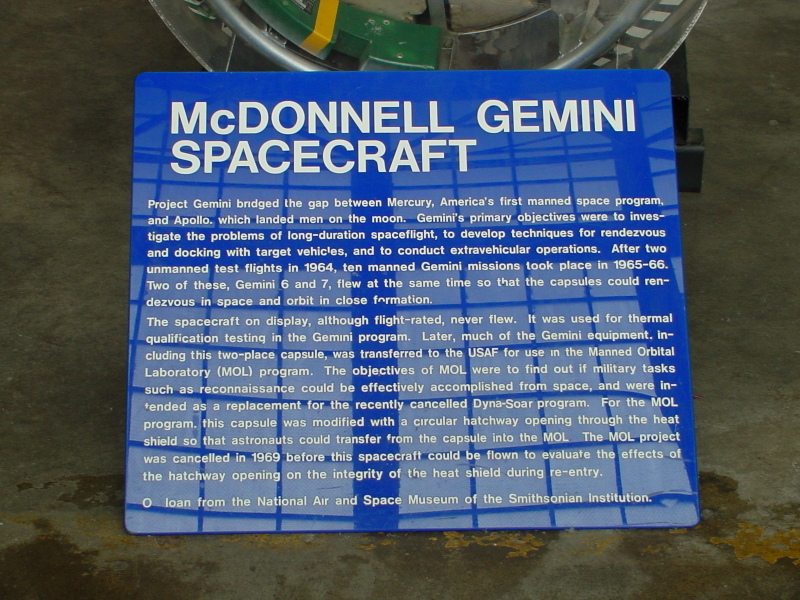| Prev |
heroicrelics.org Air Force Museum Site Index Gemini MOL Gallery |
Next |
dsc04300.jpg
The sign near the Gemini-MOL. It reads
McDonnell Gemini Spacecraft
Project Gemini bridged the gap between Mercury, America's first manned space program, and Apollo, which landed men on the moon. Gemini's primary objectives were to investigate the problems of long-duration spaceflight, to develop techniques for rendezvous and docking with target vehicles, and to conduct extravehicular operations. After two unmanned test flights in 1964, ten manned Gemini missions took place in 1965-66. Two of these, Gemini 6 and 7, flew at the same time so that the capsules could rendezvous in space and orbit in close formation.
The spacecraft on display, although flight-rated, never flew. It was used for thermal qualification testing in the Gemini program. Later, much of the Gemini equipment, including this two-place capsule, was transferred to the USAF for use in the Manned Orbital Laboratory (MOL) program. The objectives of MOL were to find out if military tasks such as reconnaissance could be effectively accomplished from space, and were intended as a replacement for the recently cancelled Dyna-Soar program. For the MOL program, this capsule was modified with a circular hatchway opening through the heat shield so that the astronauts could transfer from the capsule into the MOL. The MOL project was cancelled in 1969 before this spacecraft could be flown to evaluate the effects of the hatchway opening on the integrity of the heat shield during re-entry.
On loan from the National Air and Space Museum of the Smithsonian Institution.

| Time picture taken | Fri Oct 31 10:15:05 2003 |
| Location picture taken | Presidential Gallery Air Force Museum Dayton, OH |
| Prev | Gemini MOL Gallery | Next |